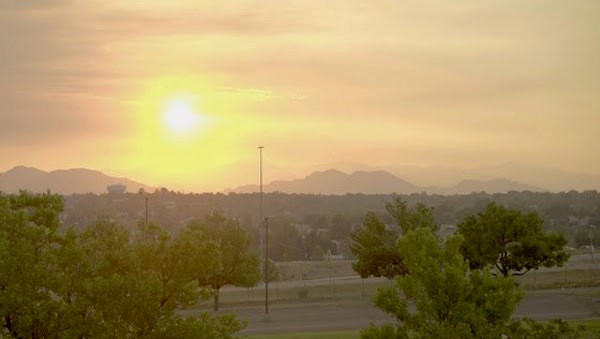NEWS RELEASE
CITY OF LONGMONT
*************************
Air quality impacts due to high ozone levels during the summer months are unfortunately not new to the Longmont and Denver North metro area. However, air quality in and around Longmont has been extremely poor this summer, and multiple hazards are causing these impacts to persist into the fall season.
Between high temps, smoke from wildfires and other air pollution, public health has been at risk and people—even those without health conditions such as asthma, other respiratory illnesses, or cardiovascular issues—have been encouraged to stay indoors with windows closed and air-conditioning on.
The Regional Air Quality Council (RAQC), which serves as the lead air quality planning agency for the Denver Metro/North Front Range area, is offering answers to questions about ozone, including what it is, how it can be harmful, and how people can reduce the risk to themselves and others. While ozone levels begin to decrease as cooler fall temperatures come into play, the risk does not completely disappear.
The City of Longmont is partnering with RAQC to help share this information with residents. We encourage you to learn about ozone and take steps to reduce the risk to both yourself and others.
What is ozone and where does it come from?
Ground-level ozone pollution is created when emissions from gas and diesel-powered vehicles and lawn equipment, paints and stains, household cleaning and personal care products, and industrial operations, combine with other pollutants and “cook” in the heat and sunlight.
Ozone levels are typically at their highest in summer on hot, dry, stagnant days. However, additional hazards such as the ongoing wildfires are also contributing to poor air quality.
Why is ozone a problem?
At ground level, ozone pollution is a harmful to all of us—especially the young and elderly—and even healthy people who work or exercise outdoors. According to the Environmental Protection Agency (EPA), breathing ozone can trigger a variety of health problems, including chest pain, coughing, throat irritation, and airway inflammation.
It also can reduce lung function and harm lung tissue. Ozone can worsen bronchitis, emphysema, and asthma, leading to increased medical care. In the long term, prolonged exposure to ozone can lead to increased risk of early death from heart or lung disease.
How much of a problem is ozone along the Front Range and Denver Metro area?
Ozone is our region’s most critical air quality issue. Ozone levels in the Denver Metro and North Front Range area do not meet health standards set by the EPA. The RAQC, along with state agencies, local governments and numerous partners, are working hard to develop and implement measures designed to bring the region into compliance with these standards and improve public health. These measures are a combination of voluntary and mandatory approaches.
Why are ozone levels so high in our region?
Like many large urban areas, the Denver metro region experiences air quality issues, particularly ground-level ozone, because of several factors, including:
- Emissions from human, industrial and natural sources;
- Our region’s meteorology and geography create a situation where air pollutants don’t easily disperse and can instead build up around the foothills and mountainous areas; and
- Background ozone from other states and countries.
In spite of these factors, ozone has improved over time, but there is still much work to be done to bring our region into compliance with federal standards.
What difference can people make in reducing ozone levels?
Taking fewer car trips is one of the best ways we can help solve the problem. The RAQC urges residents in our region to commit to skipping two car trips per week, especially on “Ozone Action Alert” days, by taking the following actions:
- Continue virtual lifestyle by ordering online and bundling deliveries for after 5 p.m.
- Combine car trips by picking one errand day a week
- Continue to work from home when possible
- Biking, walking and e-scooting for shorter distances
Other simple actions that improve air quality are:
- Decreasing idling in store, food, and service lines
- Mowing lawns after 5 p.m.
- Refueling cars after 5 p.m., and stopping refueling at the clicking sound
More information can be found at SimpleStepsBetterAir.org and RAQC.org.
This information is also available as a PDF flyer that can be downloaded and shared at https://raqc.egnyte.com/dl/
Air quality is one of ten primary topic areas that are part of the City of Longmont Sustainability Plan. Adopted in 2016, the plan provides a road map for Longmont to achieve the vision of becoming an engaged community that promotes environmental stewardship, economic vitality, and social equity to create a sustainable and thriving future for all. Learn more about air quality and the other topic areas at LongmontColorado.gov/
*************************


.jpg;w=120;h=80;mode=crop)
